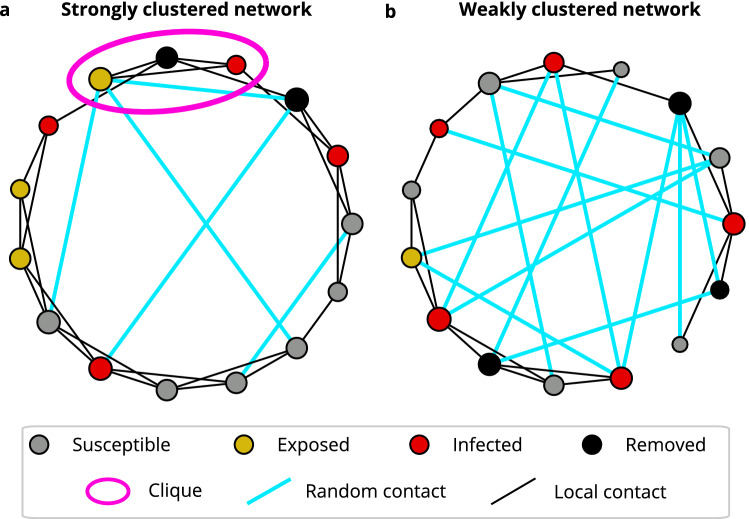Figure 2.
Watts–Strogatz small world network. Agents are placed in a ring-like topology and linked to their k nearest neighbors (black lines). Next, every link is rewired randomly with a small probability p (cyan lines). Every agent has one of four states: susceptible (gray), exposed (gold), infectious (red), or removed (black). Infectious agents spread the disease to connected susceptible agents with a probability in each time step. The size of network nodes is proportional to the node degree. (a) Strongly clustered network. Almost all contacts are restricted to neighbors (). (b) Weakly clustered network with a large fraction of random contacts (). Other parameters are equal in (a) and (b): agents, average contacts.

